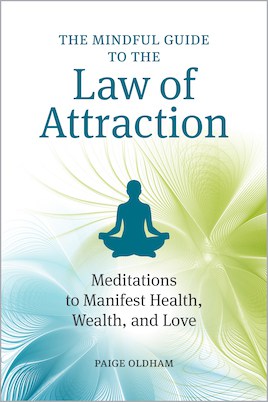Life is a whirlwind. There’s never enough time for everything we want to do. We’re on a never-ending quest for balance as we try to get “everything” done.
News flash: Remaining balanced while attempting to get everything done is completely impossible. Stop trying. Stop fooling yourself. Stop berating yourself for always coming up short of those completely unrealistic expectations.
Accept the fact that you’re a mere mortal. While each of us can probably achieve much more than we think, perfection isn’t one of those things.
Balance
Let’s look at balance first.
Some definitions of balance are:
A stable mental or psychological state; emotional stability. ~ thefreedictionary.com
Stability of one’s mind or feelings. ~Google
A condition in which different elements are equal or in the correct proportions. ~ Google
The definitions above describe a fleeting moment, not a steady state. It’s nice when you can feel like that but things are constantly changing. It’s your job to adapt in order to bring yourself back to your balance point as things continue to change.
Balance is the illusion of harmony while in a constant state of imbalance. Balance isn’t a state to be achieved.
“A quiet mind is not a state of mind to be achieved. It’s the state we experience when there is nothing to be achieved.” ~ Peter Russell, creator of “Effortless Meditation”
When the autopilot is turned on in an airplane, the plane is never flying in the perfectly intended direction. It’s constantly being pushed around by the winds and heat and cold vectors. It’s constantly adjusting its path in order to get to its destination.
If you try to stand on one foot, eventually you may feel a sense of balance (or not). As you stand on one foot, you’re constantly making adjustments throughout your body so that you can remain upright on that one foot. You may find a balance point but it’s fleeting.
It’s impossible to find and maintain perfect balance all the time.
“You can’t stop the waves, but you can learn to surf.” ~ Jon Kabat-Zinn
Although I’ve never surfed, I know that it’s not easy to glide across giant waves. It takes tons of practice and focus.
Do you think the surfer is focusing on what to make for dinner or the next twenty things on her to do list while maintaining balance as the wave crests? Highly unlikely. If she did, she would be off her board and buried under the wave in no time.
But how often do you (and I) do that? You’re in the middle of one project while you’re thinking about everything else you feel that you’re supposed to do before the end of the day. Then the phone rings or you check email (just for a minute – ha!) and your whole day suddenly spins out of control.
It’s the end of the day and you feel like you’ve barely begun that first, “most important” thing on your list.
What’s the solution?
Prioritize and Focus
Easier said than done, I know all too well.
In an earlier post (click here) I described a sign that I put on my door and how I use the sign to maintain my priorities and focus. It works amazingly well – when I use it.
Here’s how I prioritize and focus on an average day. I can’t say that I practice it daily without fail. Hey, it’s a practice, like everything else in life. No perfection here.
1) Prioritize
At the end of the day, write down one to three things (no more!) that you want to accomplish the next day. Put it in a prominent place so it’s the first thing you’ll see the next morning.
As you write down each item, understand why it’s important. Why is it a priority?
Your most important things can’t be busywork. They are things that will move you forward toward your bigger goals.
A suggestion to help you feel better at the end of the week: Make sure at least one of those “most important things” in the week is just for you. Take a walk. Leave early. Get a massage. Have lunch with a friend. Attend a class. Just for you.
2) Focus
When you arrive at work the next morning, close your door (if you have one) and put up a sign that says: “Please do not disturb me. I’m focusing.”
I know this might sound odd but it works. When I first used the sign, I could hear some laughs outside of my office but no one knocked or said anything about it. Everyone knows to leave me alone when that sign is up.
3) Start working on the first thing on your list – first.
Don’t open your email or pick up the phone until that first thing is done. This is your time. Email and phones are all about other people’s priorities.
If someone knocks on your door or somehow tries to interrupt you for their priorities, keep looking at what you’re working on with a very focused face and let them know you can’t talk right now. You’ll get back with them when you’re done.
Some people use techniques where they set a timer and work for a set period of time, then take a break for a short period of time. I’ve done this but usually find myself so engrossed in my project that I don’t want to stop. It feels so good to finally make progress that I want to keep the momentum going.
At some point, everyone needs a break. Do what works best for you.
Click here to get your free copy of “7 Keys to Getting Things Done with Purpose”!
Creating Schedules
I fought it for a long time. I couldn’t understand how you could feel more free by locking yourself into a schedule.
Well, I’m here to tell you that it works. It plays a key role in keeping you focused.
It’s kind of like a time budget. Oops. I shouldn’t have used that word. The accountant in me peaked out.
Before I scheduled out my days with the things I wanted to accomplish, I would just assume that I would get the important things done. If they’re important, of course, I’ll do them.
But days would go by with me wondering why I hadn’t done those important things.
It’s like spending without a budget. You think you have plenty of money so you spend on little things here and there. They’re just little things and they won’t add up to much.
Then it comes time to pay the important bills and there isn’t enough left.
Unfortunately, you can’t borrow time like you can borrow money (I do not advise incurring debt).
Actually, borrowing money is borrowing your time. Every dollar you borrow today is time you have to work in the future to repay it. (Suggested reading: Your Money or Your Life by Joe Dominguez)
You spend your time on little things like checking email or social media. “It will only take a minute.” Four hours later you wonder what happened to the day.
You know that you want/need to check email and social media. Instead of letting it ooze all over your day, schedule time for it. Set a timer if you have to. Reign it in. Set limits.
Two hours for your most important thing. Thirty minutes for a break. Fifteen minutes for email.
Two hours for your next important thing. Thirty minutes for a break. Fifteen or thirty minutes for email/social media.
Repeat as often as you like. Change it up.
Lay out your schedule in a way that works for you and find a way to stick with it. I put reminders on my calendar. If things don’t beep at me telling me what to do next, I tend to get distracted.
Simple Steps Out Of Chaos
1. Prioritize
What are your values? What’s the most important thing you can do to move toward your goals?
Know why these things are important to you.
Write them down.
2. Focus
Create an environment that limits your distractions. This takes work.
Clear your workspace. Turn off your phone. Leave your email closed. Close your door.
3. Create and live by a schedule
There’s an example that’s part of the 7 Habits of Highly Effective People training whereby you have to fill a glass bowl with three jars of rocks. There are big rocks, little rocks, and sand in the jars. It looks like they couldn’t possibly all fit.
If you pour in the sand followed by the larger rocks, they don’t fit.
But if you put in the big rocks first, followed by the little rocks and you pour the sand over them, they all fit.
Your top priorities are the big rocks. The sand is the busywork and other people’s priorities.
Schedule your most important stuff first and layer in the less important stuff.
These steps will help you reign in the chaos and feel more balanced.
Putting yourself and your priorities first may be a challenge initially but it’s so worth it.
Every day you’re teaching other people how to treat you. If you never put yourself first, you’ll end up bitter and resentful as other people continue to dump their priorities on you.
Despite the best-laid plans, big waves will come. Sticking by your values and your priorities and focusing on what’s important to you will allow you to surf those waves.
Click here to get your free copy of “7 Keys to Getting Things Done with Purpose”!
Create the life you want: Combine the law of attraction with mindfulness
The law of attraction suggests that our positive or negative thoughts bring about positive or negative experiences. My latest book, The Mindful Guide to Law of Attraction, pairs that belief with the powerful practices of mindfulness. Through intentional breathing, writing, and engaging, you’ll hone a method for manifesting health, wealth, and love―the elements of happiness.
Let the law of attraction work for you by adopting its basic steps of identifying and visualizing the things you desire. Then use 45 practical meditation techniques included in the book to achieve awareness. By concentrating your positive energy on obtaining your wants, you’ll give yourself permission to receive them.
To your happiness! ~Paige

You can find this book at Amazon, Barnes & Noble, Books-A-Million, and Indigo.







 The Mindful Living Guide
The Mindful Living Guide




Very nice article. Very informative and reliable. Great job done on sharing the content. Thank you and really appreciate this.
Great article! I am getting better at prioritising since the year started. It’s helping me get the things that are important done! I certainly resonate with what you have shared here!
Great to hear Evelyn! Having a daily prioritization practice helps to keep us focused. It’s too easy to start chasing the urgent but not important.
I so appreciate this reminder: “Remaining balanced while attempting to get everything done is completely impossible. Stop trying. Stop fooling yourself. Stop berating yourself for always coming up short of those completely unrealistic expectations.” Really useful tips here.
Read more: https://www.simplemindfulness.com/finding-balance/#ixzz4uUPyEYi6
Thank you Sandra! I spent too many years doing the opposite of that advice and wondering why I couldn’t make it all work. Then I had to accept that I’m only human and can only do so much.
Paige,
I love this post. I especially like the analogy of the duck pedaling its feet frantically under the water. At times, I feel like that duck too. As you’ve explained so well here, it’s all about focus and priorities. Thanks for the reminders.
There’s so much out there to break our focus and get us confused about our priorities. Eliminating distractions and keeping priorities visible throughout the day are key to moving in the direction we want.
Hi Paige,
Your topic today is so needed. I’ve heard the rock and jar example before, but so great to have the reminder to “Schedule your most important stuff first and layer in the less important stuff.” I do believe that for me when I can get into the flow by prioritizing and staying focused, so much more gets accomplished.
It seems so simple – do the most important things first – and yet most of us spend our time on the “urgent but not important.” I see it as another daily practice to improve a little bit each day. Thanks for your comment Cathy!
I really needed this reminder Paige. I had to laugh at so much of what you said because it was definitely ‘me.’
Meditation is my go to place where I can step off the whirlwind and suddenly everything is put in perspective and it’s becomes clear where my attention needs to go next.
But still going to pinch some of your great ideas and put them in place! 🙂
So glad you found some helpful ideas, Elle! Meditation is the same for me – the calm amidst the storm. I’m also working on adding a bit of boredom and daydreaming into my days (at least on the weekends) to help with my focus and creativity (and sanity).
Hi Paige,
I love the clarity in this post. And your Newsflash is bang on! There is too much selling of the “You can have it all” out there. Prioritisation and Focus are two of the most important skills we can develop.
Cheers
Keith
Thanks so much Keith! Getting clear on our values and realizing that we don’t need much to be happy (happiness is always inside us) can be very empowering.
Thanks so much for your comment!
Wow, that’s quite an amazing post – thanks a lot Paige. I think, what mostly gets us out of balance is the pressure to get hundreds of things done every day and the fear what may happen if we fall behind. We simply need to slow down a bit, to take all those “so-important” things less serious, to go more with the flow of life, to learn to enjoy simple things in life, to be less materialistic, to care less what others may think about us… and a normal state of balance will come back naturally.
I completely agree with you Robert. When a lifetime of societal programming teaches us the opposite, from personal experience, I can attest that doing all the things you’ve mentioned are “simple but not easy.” But it’s possible with daily practice. Every day won’t be perfect. Letting each thing go a little bit at a time is where real results happen.
Thanks for your comment Robert!
Thank you Paige, for sharing this.
In trying to do what I need to do, and my job and all the other stresses in life, I was blessed to find your blog. In the midst of overwhelm and busyness, I took that moment and paused and found this.
It calmed me down, I enjoyed it a lot! thank you!
That’s awesome Xihla! Many times, the best thing we can do in the midst of our craziness is to stop and care for ourselves. It seems counter-intuitive but really works. So glad you did just that!
This is totally off topic but what do you call that kind of art where you balance stones? ( the pic you used)
From what I could find, it’s called Rock Balancing. 🙂
Here’s what Wikipedia has to say about it: http://en.wikipedia.org/wiki/Rock_balancing
I’m so glad I found your blog!
I LOVE this piece – thank you – what a beautiful way to break it down..:)
Thanks so much Soulseeker! Breaking things down into simple steps takes away the “impossibility” of the concept.
Hi Paige and thanks for a wonderful entry!
It is amazing how easy it all looks when life is broken down into specific key points 🙂
I’ve learned long ago that when all is in balance, I am at my best.
Take care and thanks again. Be well.
Lyle
Thanks so much Lyle! Yes, everything seems to flow easily when all is in balance. Unfortunately, we and our worlds are in a constant state of flux and our balance points need to move with all that. Surfing through it all is the fun part!
Nice thinking, this makes me think of something I worked out for myself a few years ago regarding the self help industry. If you believe what these “gurus” who tell you how to get an extra hour in each day etc., if believe you them, you would think that time you are not “productive” is wasted.
When you get to the stage where you feel that you must spend every minute of every day been productive and cannot enjoy down time you are in danger!
I totally agree with you Kay. Down time is imperative which is why I said to make sure that at least one of your “very important” items is something fun just for you. Quite often I put things like “walk” or “read” on my short list to make sure I don’t fill the day with busywork.
“Being productive” is one of those unrealistic goals that society paints for us. I’ve found that I put far more pressure on myself because I’ve thought that others might judge me as not being productive enough. When I actually speak to those people on the subject, they either don’t even notice what I’ve been doing or think I’m crazy to push myself so hard. They actually wish I would rest more.
Agreed, I see it more and more but people are not able to relax at all and there is a feeling of unearned guild about doing non-work things. Every day at work the 1st thing I plan to do is to leave on time!
I agree that leaving on time is imperative. And I’m working on that one all the time. 🙂
Morning Paige. Things have been really busy recently and i woke up feeling slightly overwhelmed by all i need to do today. When i checked emails this morning i saw your post, stopped, made myself a cup of tea and sat down to savour it! I thoroughly enjoyed reading it, it is a fabulous reminder and just what i needed to get the weekend off to a good start. Thanks so much.
Tania,
I love that you made the choice to sit with your tea to read despite feeling overwhelmed. When I feel like I have too much to do, I have to remind myself that stopping and not doing anything so I can rest is the best thing I can do. Hope you had an awesome weekend!
This is a good post and shows what, in my experience, causes the most people to fail (or succeed if they follow these precepts). There are certain things I do EVERY day, no matter what. And these are key – but most people I know would choose to hit the snooze alarm or spend their time texting etc instead of getting what needs doing done!
I completely agree with you Ron. There have been many mornings where I’m very tired and lie in bed debating whether I should “sleep” a little longer (knowing that I won’t actually be able to sleep) or get up and do my yoga. The few times I chose to stay in bed were never good starts to my day. Every time I’ve tested the sleep vs. yoga question, yoga wins every time. I don’t debate it any more. I just get up and practice.
Having a morning routine or ritual makes a huge difference in your day and your life. Those small choices that you make each morning add up to a life and lifestyle.
Many people have never taken the time to identify their core values and top life priorities. Without those, all the little choices have no focus or real meaning. They just become things to do to fill a day – and a life.
Hi Paige….I just found your website and so far appreciate your great perspective on mindfulness, balance, focus and prioritizing—and of course I love Peter Russell’s work too! Learning how to surf those big waves remains an important intention in my life and I know that your tips can help me do that. Thanks and I look forward to future posts. ~Kathy
Thanks and so happy to have you here Kathy!
It’s funny that, years ago before I started studying mindfulness, I first read the “surfing the waves” analogy as I learned about natural childbirth methods when I was pregnant with my first child (I birthed all of my kids at home with an awesome midwife). The book talked about surfing the waves of labor by letting go and riding with them instead of resisting. It helped immensely.
We create so much pain for ourselves by resisting and fearing the things we don’t want in our lives that we can’t control instead of accepting them and riding the waves they can create.
You have the uncanny ability to clothe what I’m experiencing with words. In other words your post was right on (from my perspective). I have thought for awhile that I was always trying to find THE balance point. You’re right, it doesn’t hang around for long. Your analogy of the autopilot was good. I’ve been to sea on tug boats with auto pilots and watched as they never held a steady course, with the constant corrections that the device applied the vessels did however manage to reach their destination – almost all the time. Thanks for the timely food for thought.
Thanks Jim! I love your words: “clothe what I’m experiencing with words.” Beautiful!
Not only is today’s idea of balance impossible to achieve, but our own ideas of what balance means are always changing with our own learning and evolution.
Just like the autopilot, it’s good to have a general sense of where we’re going. We may or may not get there. It’s more about the experience of the journey and what all those waves and turbulence can teach us.